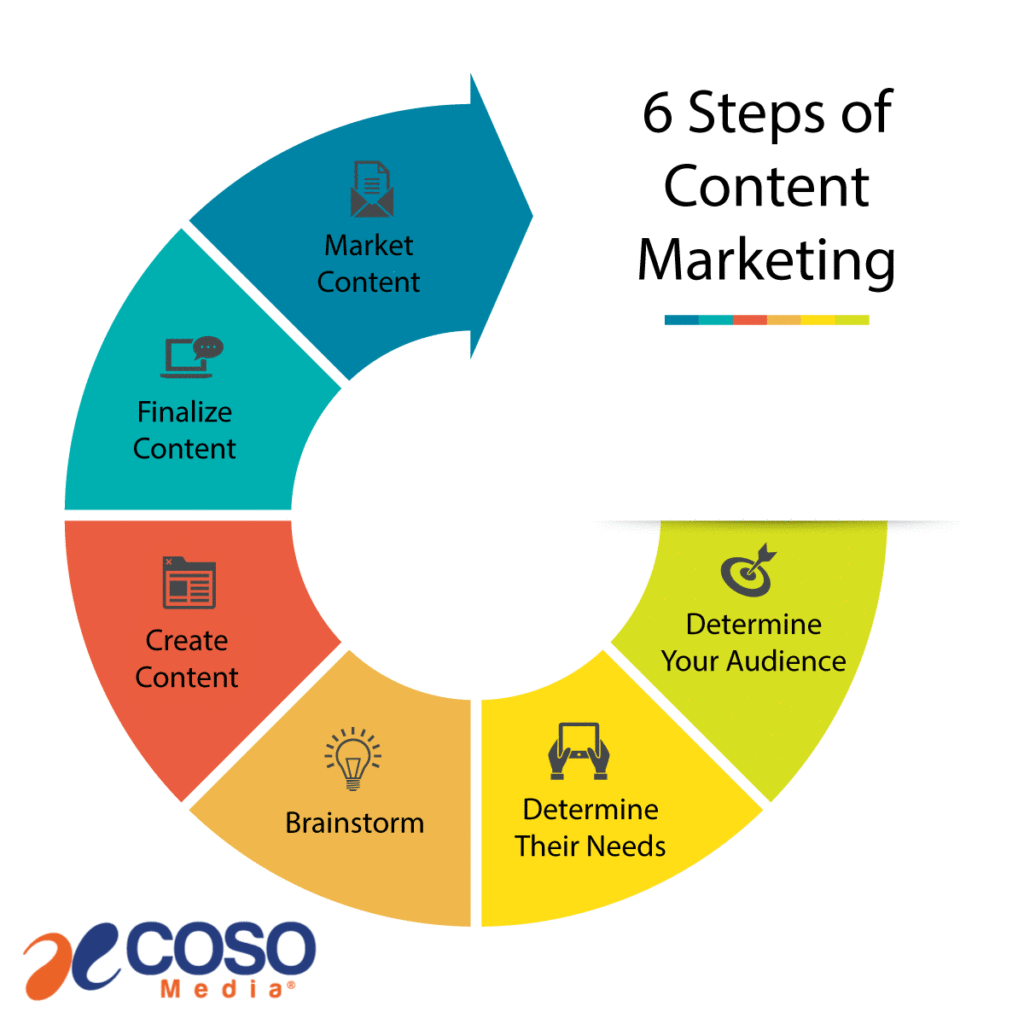
Since marketing is constantly evolving, there are always new terms and methods you are expected to know about as a business owner. At times, it can be overwhelming. One of the most recent additions to the marketing playbook is content marketing. This is the idea that your customers need more than just a product from you. They expect online material that grows your brand, helps them understand your purpose, and eventually persuade them to purchase your product or service. This sounds very ominous and intimidating, but it does not necessarily have to be; it just takes some more explanation. After 6 easy steps, you’ll know exactly what content marketing looks like in your industry and how to create it.
 1. Determine Your Audience.
1. Determine Your Audience.
Who are you selling your product to? Are they young? Do they live in the suburbs or the city? What is their average income level? The base of any good marketing strategy is the creation of an audience- personas who represent the exact people you are targeting with your marketing. The best way to create these is to research your current customers, Facebook insights, and Google Analytics until you’ve found as much information as you can. A good way to keep track of these personas is to put a name or image to their demographics. Below are some fake personas that a stationary and print company may use:

This information may not all seem pertinent to closing a sale, but it will help determining what your customers want.
2. Determine Their Needs.
Looking at the personas, does anything stick out? These three people are all at drastically different stages of life, yet the same company can market to all of them using one technique: content marketing. Journal jenny likely wants the best product on a budget and ideas on how to make the most of the products. Business Billy needs to order business cards and letterhead to impress and make more sales. Office Olivia needs things like nametags, envelopes, and bulk business cards for the other office employees. What do you think your customers need?
3. Brainstorm
Creating a blog would help each of them: Journal Jenny might want a blog about techniques for bullet journaling, Business Billy would like posts about how networking can help grow his sales, and Office Olivia would like one about organization tools. All of these topics can link back to your online store and encourage them to buy your products. In addition to a blog, using emails and landing pages to entice Olivia with offers of free shipping would convince her to buy from your store. Business Billy might respond well to customer spotlights that show the best business cards you’ve designed and printed. If you’re stuck at this point, it’s always worthwhile to ask your customers what they would like to see from you. In the form of an in-person survey, email survey, or just small talk at checkout, people are usually willing to answer even if they don’t realize what they’re saying could help.
4. Create Content.
This is the hardest step. You know your customers, but how can you be sure that what you’re creating is what they will want? You can’t be. It takes trial and error to create effective content, just like any other marketing strategy. After a while, customers will respond to your content and their interest will be confirmed. Take any drafts of the content you want to create and get going- do research to find the best techniques and most effective platforms. Create a draft and read it over- and always, always, always, have someone edit it.
5. Finalize Content.
After having someone edit your content (seriously have someone edit it) and making any changes, you need to finalize your content. Upload the blog to your website, create the landing page that your information will go on, or create the link for your PDF guide. Make sure your content follows your brand guidelines, includes accurate information (and references), and can be shared easily.
6. Market Content.
You did it! You created content! Now what? If you have an email list, send it to that list. If you have social media platforms, post it there and share it over and over again if you have created evergreen (reusable) content. Order postcards and put them in the bags at your store telling people to check out your website. Promote your content in every way possible so you know that your customers are aware of it. Then, keep an eye on your content and how it performs after posting; if people clicked, opened, or engaged with it, you headed in the right direction. If they didn’t, move on. Head back to step #3 and brainstorm to find new content ideas.
Content Marketing may seem difficult, but the rewards outweigh the hardships. If you want to start content marketing but aren’t sure how, contact us today and we can help you get started!
